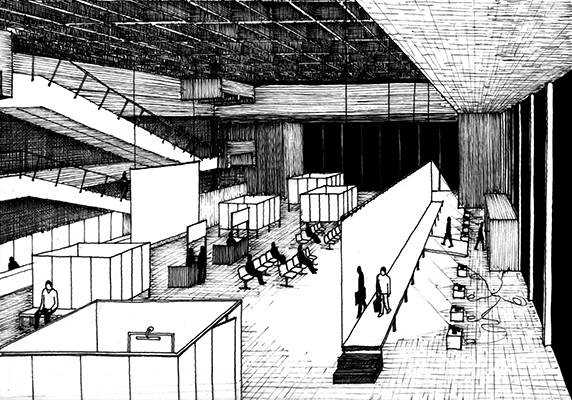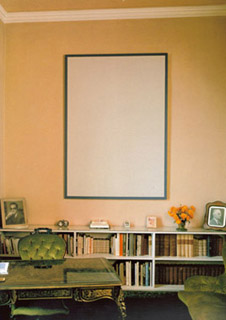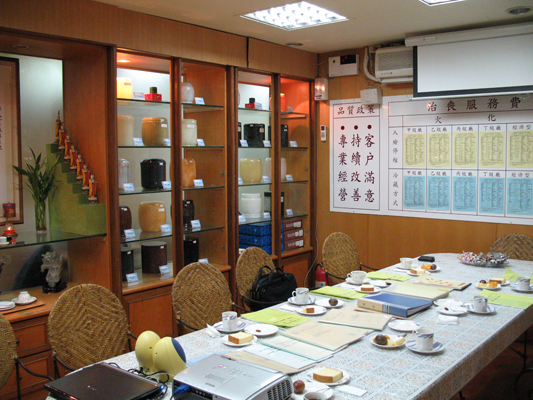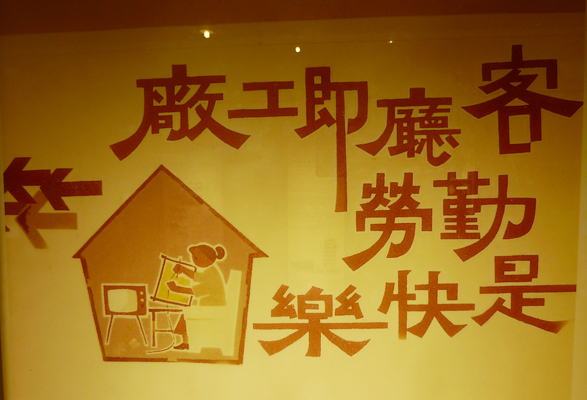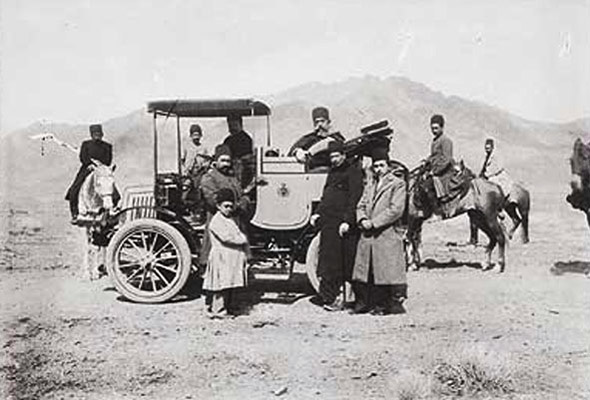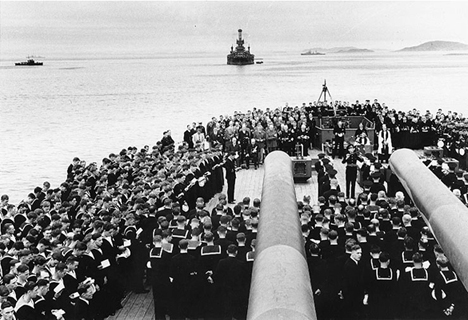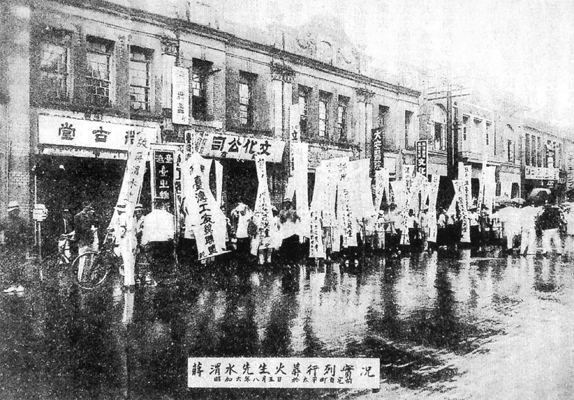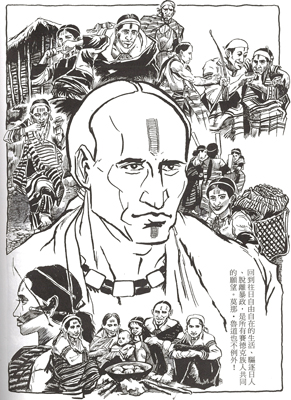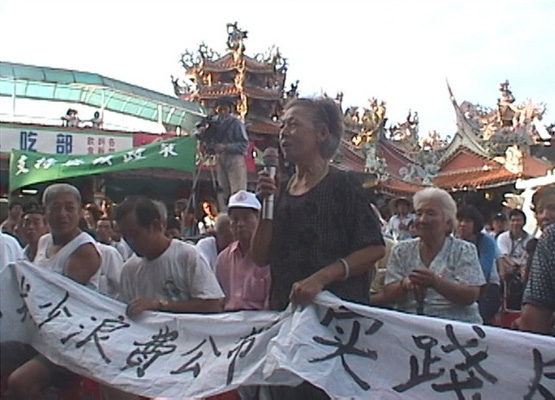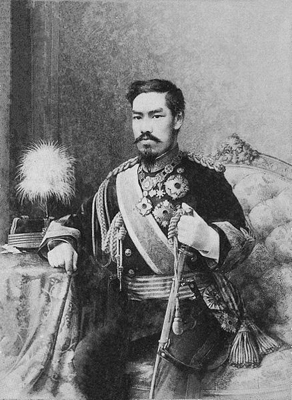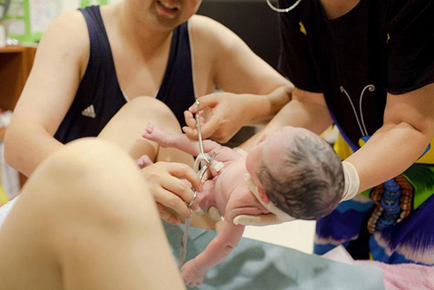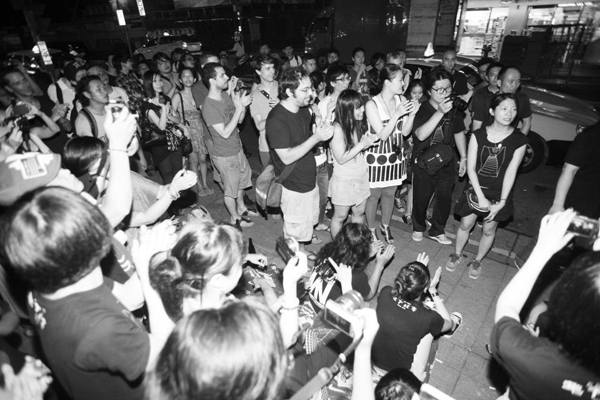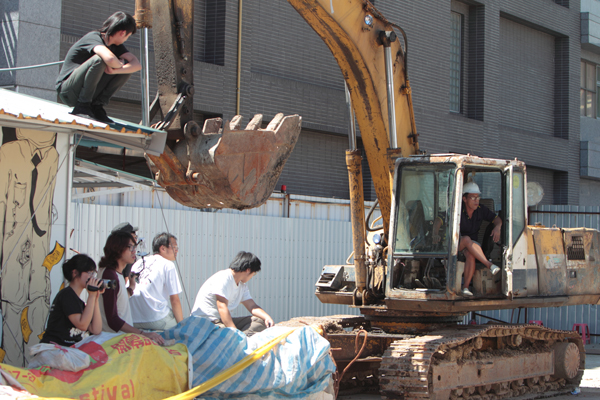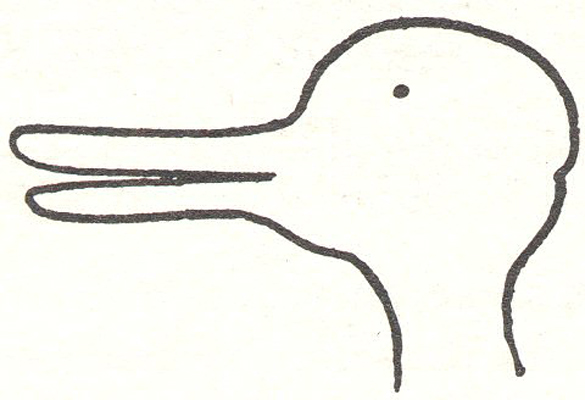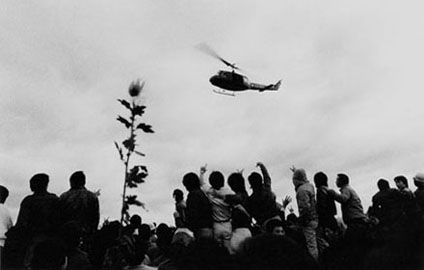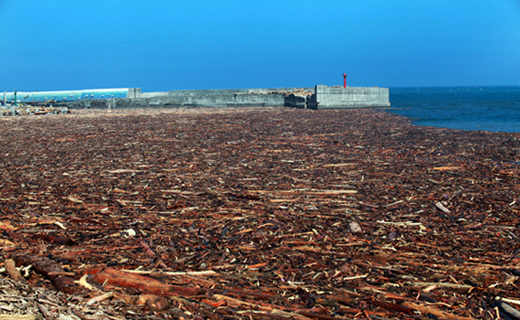The Waiting Hall. Scenes of Modernity is a discursive event taking place on the opening night of the Taipei Biennial 2012 in the vast entrance lobby of the Taipei Fine Arts Museum, where subsequently it will remain as an installation and archive. About seventeen people—artists, theorists, activists—are invited to engage in dialogues, which take place in secluded, small office-boxes installed in the lobby. Five dialogues take place in parallel, and audience members listen to their dialogue of choice on headphones, but they can also register themselves to become a partner in one of the dialogues. The installation is conceived as a backstage area and a waiting hall in the image of a Kafkaesque narration of bureaucracy, inspection, and the pact between the one who waits and the one who keeps someone waiting. Scenes of Modernity creates a space for undecided modernities and their multiple “primal scenes.” Each conversation will last thirty minutes and revolve around an image or description of this chosen scene.
What is modernity? One of the characteristics of this notorious term is that among different people and different disciplines, there is strikingly little agreement about its meaning and definition, dates and origins. Is this an epoch, a condition, a mental state, an idea, a method or a technique? There is a modernity of science, of art, of modern nation states, a technological modernity, a social modernity, a colonial modernity, a capitalist modernity, the modernities of the colonized, and the hyper-modernities of the contemporary capitalist cities and worlds. And yet, if there are multiple modernities, what do they have in common? There are modern mythologies, among them the myth of the one modernity with only one trajectory of “development,” one model of progress, the myth of the anti-traditionalist ultimate break with an archaic, non-modern or corrupted past—a once powerful picture in the imaginary of modernity that in the present has been deeply destabilized and has become uncertain, as no presentis safe from the “returns” of the past.
In all cases, the question of just what constitutes “the modern” in modernity remains undecided and perhaps undecidable. But there is no scarcity, on the other hand, of “primal scenes” and myths of origin. The installation takes as its point of departure a primal scene of modern Chinese literature: in 1906, Lu Xun, then a student of Western medicine in Japan, saw a slide show in which a Chinese crowd idly watched as one of their compatriots was beheaded for spying on the Japanese army in the Russo-Japanese war. Dumbfounded by this scene of decapitation, and in particular by the apparent passivity of the Chinese onlookers enjoying the spectacle, Lu Xun realized that before saving Chinese people’s bodies, he first had to save their souls. He abandoned his medical studies and pursued literature. His short stories, poems, and essays are taken to mark the beginning of modern Chinese literature. Whether this event actually took place or is a myth retrospectively created by Lu Xun, “the case of the decapitation suggests that fiction and (private and public) history might have become inextricably confused, at the (textual) beginning of modern Chinese (literary) history.” (David Der-Wei Wang)
What qualifies as a “primal scene”? All scenes of modern origins appear to be scenes of “division”—whether this is the cutting off of a head from a body or an ultimate break from a tradition or a past. A “scene” or “scenography” also entails a relational diagram—a constellation between conscious actors, passive onlookers, and anonymous structural or systemic agency creating a complex moment in time, staging the paradox of modernity. All definitions of “modernity” have such “primal scenes,” events of rupture and myths of origin against which the very definition of just what counts as “modern” is measured.
The installation work of Hannah Hurtzig / Mobile Academy deals with the notion of knowledge and non-knowledge and how they are used and transferred in the act of communication in public space. Hannah Hurtzig’s Mobile Academy projects explore the rhetorics and gestures of conversation, of one-to-one dialogues, and new and old modes of assemblies. Each project is first a live event and later becomes an installation and an archive. In addition, each project is dedicated to a specific theme/subject and explores it in an encyclopedic manner.
Hannah Hurtzig, born in GDR, lives and works in Berlin
Please listen to the talks in The Waiting Hall recorded during the opening of Taipei Biennial 2012 on the 28th of September. The dialogue partners of the speakers are members of the public who could book the talks at a Check-in in the The Waiting Hall.
A HOLE ON THE WALL: WHY PAINT MONOCHROMES?
Luis Jacob (en)
Monochrome painting has been a new form of art-making of avant-garde visual art throughout the 20th century. A monochrome is described as a painting or drawing in different shades of a single color or shades of one color. So when looking at monochromes - there is almost nothing to look at, they are empty pictures, they look like a hole in the wall. Luis Jacob tells us why the most important experience of art, since the Greeks, is the one with holes. And how the experience of the hole is related to anarchists politics and what all of this has to do with our childhood when we first learned how to ride a bike.
Luis Jacob, is working as artist, curator, and writer. His diverse practice addresses issues of social interaction and the subjectivity of aesthetic experience. Recent solo exhibitions include Show Your Wound, Galerie Max Mayer, Duesseldorf and Birch Libralato, Toronto (2012); A Finger in the Pie, A Foot in the Door, A Leg in Quicksand, Kunsthalle Lingen (2012) born in Peru, he lives and works in Toronto. (Scene 2; Cabin No.1001; 8.00 pm)
METAMORPHOSIS OF FUNERAL SERVICE IN TAIWAN
Tseng Haunn-Tarng (ch)
The traditions of Taiwanese funeral services inherited from the Minnan culture that came with Zheng Chenggong (Koxinga) from the mainland China, and may even be further traced back to the mourning tradition of wearing hemp cloth as described in the Book of Rites in the Zhou dynasty. These traditions were still well reserved even during the Japanese occupation period. Tseng Haunn-Tarng, professor of life and death studies, points out that due to the urbanization process, the funeral industry stepped into the modernization in the past 30 to 40 years, along with the changes of the living environment, family structure and metropolitan lifestyles. The funeral industry started providing a great variety of accompanying services, and recently adapted the implementation of licensing and evaluation around 10 years ago.
Tseng Haunn-Tarng, Professor at the “Institute of Life and Death Education and Guidance” in National Taipei University of Nursing and Health Sciences. He is specialized in the fields of life and death disquisition, medical sociology, grief support, funeral service education, and training for nursing. (Scene 3; Cabin No.1002; 8.00 pm)
THE LIVING ROOM IS THE FACTORY
Teng Chao-Ming (ch)
The campaign of “Living Room As Factory, Laboring As Happiness” was promoted as a policy to build the export-oriented economy in the 70s in Taiwan. Artist Teng Chao-Ming revisits his childhood memory of working as a child labor at home, assembling electronic parts. These assembling lines, connected from home to home, once served to create the economic miracle as well as the new middle class. The phenomenon of home factories disappeared when Taiwan enjoyed its economic growth, but recently came alive again due to the economic depression, the high unemployment rate and the return of failed businessmen from the China market, with a new fashionable platform of the internet.
Teng Chao-Ming is a visual artist based in New York and Taipei. He graduated from the School of Architecture and Planning at MIT, USA, and has been showing his work internationally. Currently he is doing research on topics including how recent development in neuroscience and cognition science changes our understanding of the self, and the industry of "self-help" publications, programs, and its stars. (Scene 5; Cabin No.1004; 8.00 pm)
INTRODUCTION TO A DISAPPEARING LANGUAGE:
KARI SEEDIQ TGDAYA
Dakis Pawan (ch)
The reservation of Taiwanese indigenous culture is mediated by modern methods, machines, and certification procedures. For instance, we learned there were nine tribes of Taiwanese indigenous people decades ago, but the Council of Indigenous People now approve there are fourteen, and perhaps more tribes would be approved in the future. It demonstrates how we employ modern techniques to reserve traditions nowadays. There are more examples, such as employing Roman spelling system to transcript oral languages for writing, education and documenting dictionaries. We use different machines to make audio and video recordings, and even make movies to preserve traditions. Nevertheless, we cannot only emphasize on how to preserve the old traditions. It is time to re-think the modern meaning of traditions in the new context. For example, it is impossible for us to kill people for the qualification of having a facial tattoo, which is considered to be a crucial testimony for our belief. So, the question is: what is the modern qualification of having a facial tattoo?
Dakis Pawan (Guo Mingzheng in chinese) comes from the tribe of the Seediq Tgdaya. He has published several aboriginal language textbooks and dictionaries, as well as and a behind-the-scenes book on the movie: Sediq Bale. He lives in Jîn-ài-hiong in Nantou. (Scene 6; Cabin No.1005; 8.00 pm)
IRAN: MOZAFFAR-AL-DIN SHAH’S AUTOMOBILE
Bavand Behpoor (en)
Nasser-al-Din-Shah brought photography to the country in 1842 and his successor Mozaffar-al-Din-Shah, imported the first automobile, a „Serpollet Carriage“ from Paris to Tehran in 1900. Behpoor tells this stories of two Iranian kings and continues in exploring how modernity may reflect back to the modern as the primitive.
Explanatory note: Behpoor´s quote in the end of the talk by the german philosopher Theodor W. Adorno is cut off by the stroke of the gong. It reads as follows: 'Wherever in the world you go these days, you see the same cash machines, the same telephone boots, the same transportation system and metro.' And Behpoor adds: “ I wanted to tell the person I was talking to, that like any other metropolis, Tehran would not appear exotic in the matters that relate to everyday life. Differences should be sought elsewhere. It is no desert with camels moving around!”
Bavand Behpoor is an art theorist, artist and critic based in Tehran. After doing his MArch at Shiraz University, he did an MA in Contemporary Art Theory at Goldsmiths College, London University. He is currently a PhD candidate at Ludwig-Maximilians Universität, Munich. He has translated a.o. Oskar Wilde, Raymond Queneau and Alain Badiou's “Ethics: An Essay on the Understanding of Evil” to Persian. (Scene 7; Cabin No.1001; 8.30 pm)
THE ARCHITECTURE OF THE INTERNATIONAL
John Palmesino (en)
John Palmesino is an architect and urbanist, born in Switzerland. He is the initiator and curator of several research projects a.o. Territorial Agency (together with Ann-Sofi Rönnskog), an independent organization that promotes integrated spatial transformations, Neutrality, a multidisciplinary investigation in the territorial implications of UN policies and self-organisation processes of transformation and control of the contemporary human landscapes. (Scene 8; Cabin No.1002; 8.30 pm)
"YAO-YAN" FILMS
Chen Chieh-Jen (ch)
The Chinese word for “rumor,” yao-yan (謠言), originally referred to a form of a cappella musical incantation. Poetical language induces a dynamic imaginative state in the mind, producing what might be called immaterial images. For the artist Chen Chieh-Jen, rumors are a “fabricated narrative strategy by which people engage in social intervention and disruption through poetical language, creating perspectives divergent from the mainstream viewpoint to address the power elite that controls the mechanisms of rule, as well as concrete problems in society.” When such “yao-yan” films are embodied as struggles through bodily exercises and practices, we are able to recognize how the meaning of modernity is intersubjectively negotiated among different cultures.
Chen Chieh-Jen is a contemporary Taiwanese artist. He works with people of different backgrounds to create art. By building film-shooting sets together, Chen and his collaborators turn the film site into a provisional community where “individuals living in atomized societies” can get to know one another. It is in these realms that he has completed films full of poetic dialectics. Chen exhibits internationally and has participated in Art Biennales in Venice, Sao Paulo, Istanbul, Liverpool, Lyon, Sydney, Shanghai, Gwangju and Taipei. (Scene 13; Cabin No.1003; 8.30 pm & 9.30 pm)
WUSHE INCIDENT AND MONA RUDO
Chiu Row-Long (ch)
Thanks to the film Warriors of the Rainbow: Seediq Bale, Taiwanese society has discovered a renewed interest in the Wushe Incident. Adopting this historical uprising as his setting, illustrator Chiu Row-Long initiates an exploration of multiple intersecting aspects of modernity. This saga, in which Mona Rudo seems to be a fundamentalist dedicated to preserving his people’s traditions, is actually an abandonment of tradition. On the other hand, in the eyes of modern ethnic Chinese, Mona Rudo was a martyr in the anti-Japanese resistance movement. Yet the concept of martyrdom never existed in his native culture. This incident has engendered a constant shifting and repositioning of modernity within the recollection of different historical contexts, shining a light on the contradictions of historical self-depiction.
Chiu Row-Long is an illustrator who excels in the realist style of design and writing, and is particularly inspired by the history and culture of the Taiwanese aborigines. His comic book “Manhua Bale” inspired director Wei, Te-Sheng to make his award- winning epic film “Warriors of the Rainbow: Seediq Bale”. Chiu`s documentary “Gaya: Seediq and Wushe Incident in 1930” was nominated for the 1999 Golden Horse Award for best documentary. (Scene 9; Cabin No.1004; 8.30 pm & 9.00 pm)
THE ANTI-NUCLEAR VOICE IN KUNGLIAO
Tsui Shu-hsin (ch)
The anti-nuclear movement is one of the most significant social movements in Taiwan’s history of democratization. Constructing nuclear power plants seemed to be a rational, legitimate decision in a modern democratic society, but in fact it reflected fractures of a democratic society. Only when former law student Tsui Shu-hsin came into contact with the local residents of Gongliao, the site of Taiwan’s fourth nuclear power plant, did she realize the disparity between media and reality, and how democracy is tied to the minority of stakeholders of interests and professionalism. Bold policy decisions and responsible behaviors usually cannot find a place in the conservative bureaucratic structure, which becomes a huge ineffectual and even illegal machine, cut off from reality. Realizing the law is a futile tool, she turned to make documentary films as a means to draw closer to the truth, as well as to spread awareness of social movements.
Tsui Shu-hsin studied law and is the General Secretary of “Green Citizens Action Alliance” in Taiwan. She is an anti-nuclear activist and has been involved in environmental movements for many years.In 2004 she directed the award-winning documentary How are you Kungliao? and in 2010 she curated an exhibition on the environment. She lives in Taipei. (Scene 10; Cabin No.1005; 8.30 pm)
THE FIRST PICTURE OF THE EMPEROR MEIJI, 1888
Chihiro Minato (jp)
The first picture of the Emperor Meiji was made by Italian engraver Edoardo Chiossone, who first sketched the emperor’s head after observing him through a hole on a screen, and then painted his image in full military regalia as in a Western royal portrait. This first image of the emperor was photographed, and widely distributed during the Meiji Restoration. Since then, the emperor, who originally could have never been glimpsed, appeared in the public in the form of go-shin-ei (the Real Image of the Emperor). People venerated this image as if it were the Emperor himself. Artist Chihiro Minato believes this exchangeable relationship between reality and image is a crucial symbol of the Japanese modernization, and the hidden reason why Japanese people are so passionate about photography. Photography blurs the boundary between the invisible and the visible; illusion could be transformed into reality via photography. It is to say that illusion and reality keep transforming and surpassing one and another.
Chihiro Minato is an artist, writer, critic and professor for fine art at Tama Art University, Department of Information Design, since 1995 and where he is one of the founding members of Art Anthropology Institute, established in 2006. In 2007 he has served as the commissioner of Japanese Pavilion at Venice Biennale. His recent publication includes Voyage Typologic (Taipei 2009) and Jomon in Your Hands (Tokyo 2012). (Scene 11; Cabin No.1001; 9.00 pm)
MODERN MIDWIVES FOR CYBORG BABIES
Wu Chia-Ling (ch)
Taiwanese views on childbirth began to change during the Japanese colonial era with training for a new style of midwifery, and have evolved into the present-day medical system. Most Taiwanese consider giving birth at a large hospital with the assistance of a physician to be the most hygienic, safest method of childbirth. The percentage of caesarian in childbirth is more than 30% in Taiwan, and ranks the top in the world. Yet now more and more modern women are seeking a more autonomous, intimate and beautiful childbirth experience, with diverse options of birth places, delivery methods, service personnel, pain relief techniques and technological resources, and seeking out modern midwives to assist in the birthing process. Sociologist Wu Chia-Ling shares observations of modern midwives in Taiwan and other countries to explore new definitions of modern technology.
Wu Chia-Ling is an Associate Professor in the Department of Sociology at National Taiwan University. Her areas of research include medical sociology; gender studies; and science, technology and society. She received a research grant from Taiwan National Science Council, to pursue a project entitled: Marginalized Reproduction: Gender/Sexuality, Class and Assisted Reproductive Technologies. (Scene 12; Cabin No. 1002; 9.00 pm & 9.30 pm)
THE POWER OF PARTY AND ALCOHOL: INDEPENDENT MUSIC
AND ITS OPPONENTS
Ho Tung-Hung (en)
Ho Tung-Hung is associate professor of Psychology in the department of Psychology at Fu-Jen Catholic University, Taiwan. His research and writing has been in the fields of popular music, youth culture, cultural politics, and action research. (Scene 4; Cabin No.1003; 8.00 pm & 9.00 pm)
THE URBAN RENEWAL ACT OF 1998
Huang Hui-Yu (ch)
Swapping an old apartment for a new one, square foot for square foot – what’s wrong with that? Don’t urban progress and modernization rely on construction to move forward? Recently, a series of controversies have arisen over urban renewal, gaining the attention of the entire Taiwanese society. Engaging in a dialogue with Peng Lung-San, graduate student Huang Hui-Yu explores the ideologies lying in the background behind Taiwan’s urban renewal laws, and the economic, cultural and social changes urban renewal brings about. By sharing case studies, she focuses her vision on a more precise position: analyzing whether urban renewal is able to truly improve the quality of habitation for the original residents, and how economic development and the human environment can limp forward in the march of modernization.
Huang Hui-Yu studies at the Graduate Institute of Trans-Disciplinary Arts in Taipei National University of Arts. She became active in anti-eviction movements in 2009. Huang is a member of the Taiwan Association for Justice of Urban Renewal, and has joined hands with residents and activists from various backgrounds in helping urban renewal communities around Taipei to fight excessive developments and unjust policies. (Scene 14; Cabin No.1005; 9.00 pm & 9.30 pm)
THE TILTING IMAGE
Anselm Franke & John Akomfrah (en)
Anselm Franke is a critic and curator based in Berlin, and curator of the Taipei Biennial 2012. He recently curated the exhibition and publication project "Animism" in various collaborations and chapters shown in Antwerpen, Bern, Vienna, Berlin and New York between 2010-2012. Since 2006, he is co-curator of the Forum Expanded of the International Filmfestival Berlin. He is designated Head of Visual Arts, Film and Media at the Haus der Kulturen der Welt in Berlin.
John Akomfrah is the director of numerous award-winning films dedicated to the experience of colonialism, diaspora, and resistance.
He is one of the founders of the Black Audio Film Collective, which was active between 1982 and 1998, and whose groundbreaking activities placed racism and Black identity on the public agenda in Britain. (Scene 15; Cabin No.1001; 9.30 pm)
CHANNEL 4, THE PEOPLE
Cheng Lu-Lin (ch)
The Freudian concept of the primal scene is a very intriguing departure point to reflect the violence, carnality, passion and fluidity on the birth of modernity. The photo, taken in November 30, 1986, documented the live conflict between the military, policemen and the crowd who welcomed the exiled political activist Hsu Hsin-liang to come back to Taiwan is considered as a turning point in the Taiwanese democratization by sociologist Cheng Lu-Lin. Cheng thinks, by the modern definition of politic, democracy refers to the equality and sameness of the mass, as well as the rational and objective pursuit of the truth agreed by the majority of the mass. However, from history, we often see democracy began with a passionate violent process, which was mobilized by the barbarian minority but not the rational majority.
Cheng Lu-Lin is a sociologist, and Associate Research Fellow at the Institute of Sociology, Academia Sinica, Taipei. His areas of research include economic sociology, developmental and organizational sociology. (Scene 16; Cabin No.1004; 9.30 pm)
A DESIRE TO BECOME A FOREFATHER RESPECTED BY GENERATIONS TO COME, AS MY FOREFATHERS HAVE BEEN
Panai Kusui (ch)
Panai Kusui is a singer, song writer, and folk icon from Taitung. Part Pyuma and part Amis, two of the tribal groups of Taiwanese aborigines, she has been active in collecting and preserving aboriginal song traditions. As a social activist she is is campaigns against the proposed storage of nuclear waste and the construction of the Miramar Resort at Taitung County. (Scene 17; pre-recorded)
A project by Hannah Hurtzig. A Co-production by Taipei Biennial 2012 "Modern Monsters / Death and Life of Fiction" curated by Anselm Franke, Taipei Fine Arts Museum and Mobile Academy Berlin

